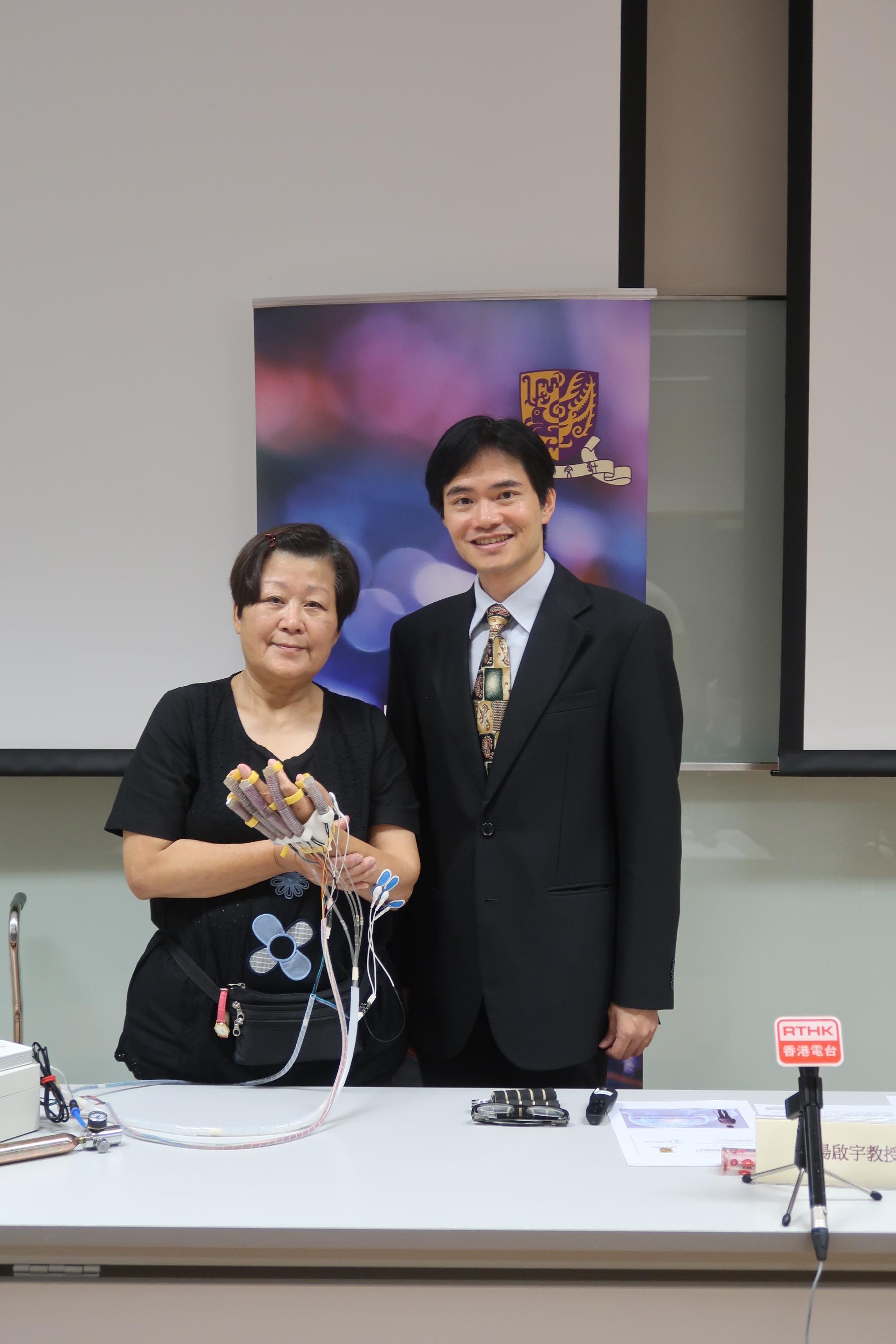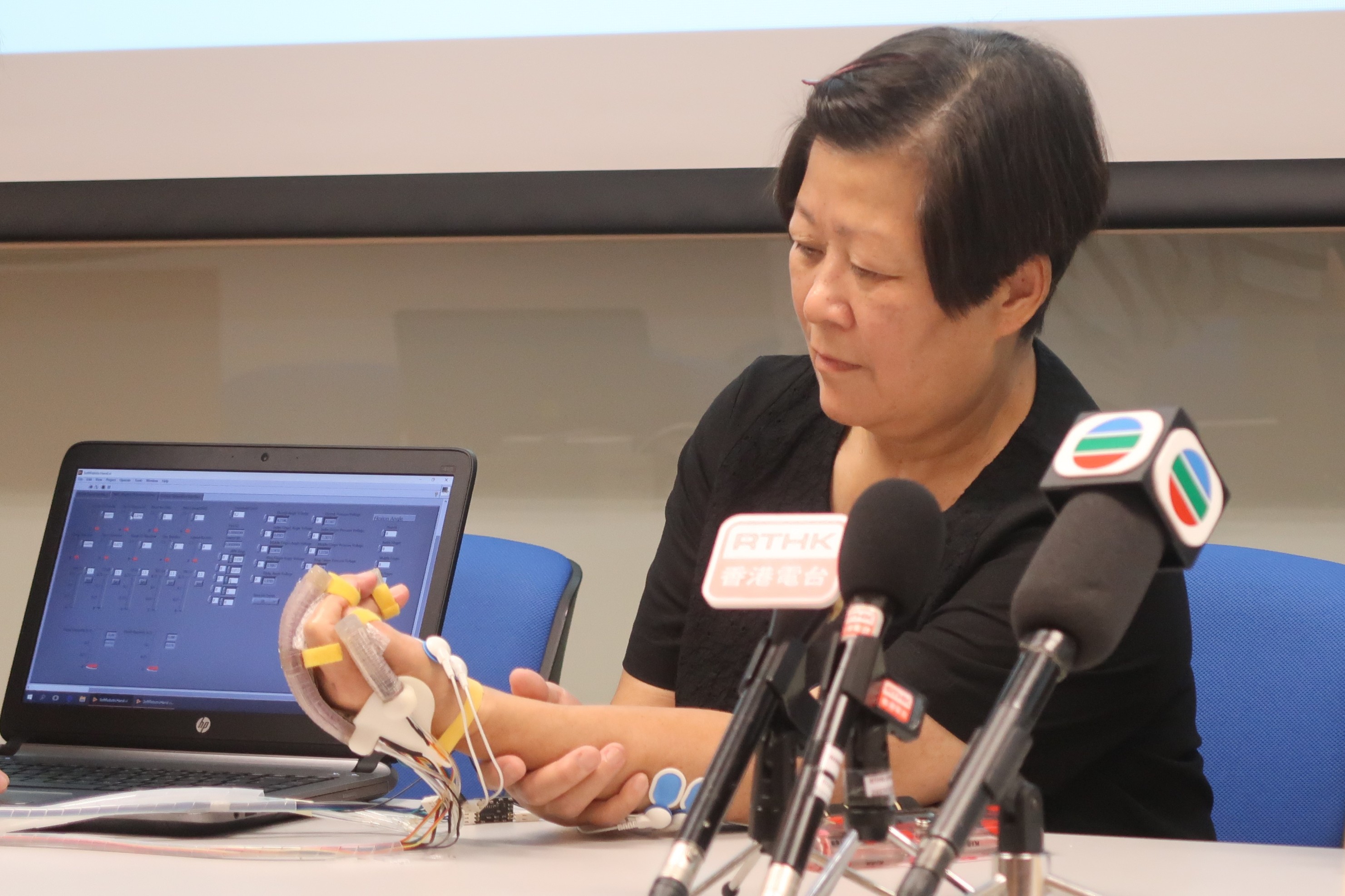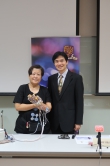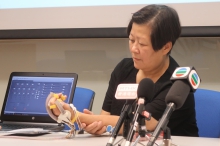CUHK
News Centre
CUHK Develops a New 3D-printed Soft Robotic Hand Provides Training and Supports Rehabilitation of Hand Function after Stroke
Stroke is one of the main causes of disability in the world. Stroke cases happen approximately every 40 seconds. In view of the aging population, the rehabilitation of stroke patients receives a high level of attention in society. A research team led by Prof. Raymond Kai-Yu Tong, Professor and Chairman in the Department of Biomedical Engineering, and Prof. Zheng Li, Assistant Professor in the Department of Surgery at The Chinese University of Hong Kong (CUHK) has developed the 3D-printed soft robotic hand (soft robotic hand) by making use of the latest silicone printing technology. This provides stroke patients a tailor-made, less bulky but comfortable and affordable soft robotic hand for the rehabilitation process and so supports rehabilitation of the hand function.
Latest silicone 3D–printing technology takes over from bulky traditional rehabilitation devices
Because of their bulkiness, the traditional rehabilitation mechanical devices for stroke patients are usually found in hospitals. As patients cannot use the devices at home every day, they give a low level of support to them in their daily lives which affects the effectiveness of recovery. Therefore, Prof. Raymond Kai-Yu Tong and his research team developed the ‘Hand of Hope’, a mechanical robotic hand rehabilitation system, a few years ago, which provides training and supports rehabilitation of hand function after stroke. The ‘Hand of Hope’ was also the first Hong Kong-based hand rehabilitation system to receive the Grand Prix Award at the 40th International Exhibition of Inventions of Geneva in 2012, and currently hospitals in over 15 countries are using it to help rehabilitation of stroke patients after obtaining the US Food and Drug Administration (FDA)’s approval and the Conformité Européene (CE) mark.
Based on the success of the ‘Hand of Hope’, together with the rapid development of soft robots and silicone 3D-printing technology, the research team has spent nearly two years developing the new soft robotic hand. Compared with the traditional mechanical rehabilitation devices, the silicone actuator controlling the activities of the fingers of the soft robotic hand is much smaller and lighter and patients can bring the soft robotic hand home to support daily activities. It can be tailor-made for patients, from children to adults, according to the size of their fingers and palms. The soft robotic hand can detect signals from the brain to the muscles, which supports patients in learning hand functions again and in performing complex gestures. This will enable occupational therapists to train patients in different daily tasks. In terms of the price, the cost of the silicone actuator is around one-tenth of the traditional rigid motor, meaning that is affordable to more patients.
Prof. Raymond Kai-Yu Tong said, “As the ‘Hand of Hope’ made use of the traditional rigid motors, it was hard to further trim down its size and weight. The soft robotic hand is not only lighter and smaller, but we can tailor-make it for every stroke patient according to the hand size. So, some rarely found stroke patients, such as children, can now participate in the rehabilitation training sessions. We have provided training sessions to a stroke child, and we have found significant improvement on his hand function. In the future, we wish to deliver a soft robotic hand to every stroke patient so that they can start the training, even at home, rather than spending lots of time travelling to hospitals for training every day.”
The soft robotic hand is pneumatically actuated to control patients’ ability in hand opening and closing. To deal with the spasticity presented in stroke patients’ compromised fingers, the research team has modified the design of the silicone actuator to facilitate effective finger flexion and extension, which is important for patients in performing more complex gestures. To enhance the quality of the silicone actuator, the researchers run a simulation to analyse the actuator characteristic before sending the actuator out for 3D-printing. While choosing the suitable 3D-printing service provider, the research team mainly focuses on the durability of the 3D-printed components, e.g. whether rupture would occur on the silicone actuator after a lengthy period of flexion and extension actuation.
On-going clinical trial to validate the effect of rehabilitation on stroke patients
When using the soft robotic hand, electrodes will be attached to the hemiplegic side of patients for recording the tiny electric current generated during muscle activity. The tiny electric current from the brain can be treated as an indicator of hand movement. When patients are trying to open the hand, muscle activity will be recorded through the attached electrodes and the soft robotic hand will open patients’ hands following their intention. This enables the patients to learn the correct way again using the brain to control their hand functions.
The CUHK research team is now recruiting patients to participate in the clinical trial to further study the effectiveness of the soft robotic hand in stroke patients’ hand function recovery. Interested patients can email to clinicaltrial@bme.cuhk.edu.hk for further details.
About CUHK Biomedical Engineering
CUHK has been providing the necessary resources and effort to support the development of biomedical engineering. CUHK was the first to start the biomedical engineering master’s degree programme, as early as 2006, and started the undergraduate degree programme in 2010 with the Faculty of Medicine. In 2012, CUHK also started the MPhil-PhD degree programme. After years of planning and preparation, the Department of Biomedical Engineering was finally launched in July 2017. It provides professional training in biomedical and engineering sciences to solve medical problems through innovative research and benefit the global community.
A research team led by Prof. Raymond Kai-Yu Tong from CUHK has developed the 3D-printed soft robotic hand (soft robotic hand) by making use of the latest silicone printing technology. This provides stroke patients a tailor-made, less bulky but comfortable and affordable soft robotic hand for the rehabilitation process and so supports rehabilitation of the hand function.





